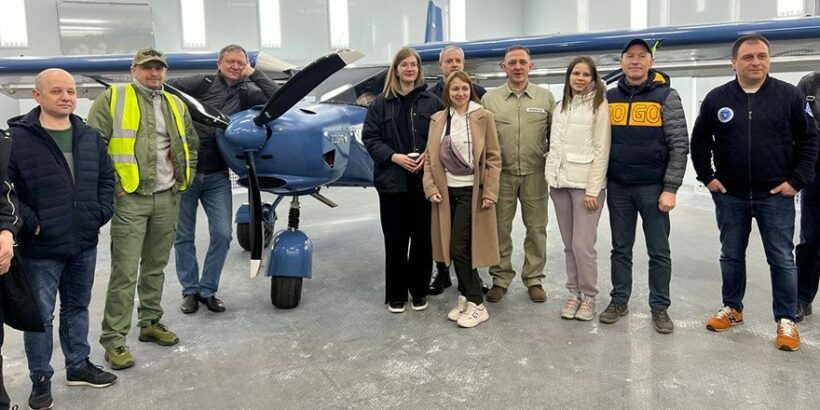At the Myachkovo airfield near Moscow took place a solemn ceremony of transfer of the first training aircraft of domestic production SP-30 to the training centre Aero Region Training. This was reported in the press service of the company-developer of the SP-30, the First Experimental Design Bureau.
The event took place on 20 April 2024 as part of a special programme to equip flight schools with Russian-made aircraft of the First Experimental Design Bureau (Taganrog). Aero Region Training has branches in several regions of Russia, including Moscow, St. Petersburg and Yaroslavl.
The transfer ceremony was attended by representatives of Rosaviatsia, DOSAAF, cadets of flight schools. Everyone could familiarise themselves with the SP-30 modification, which is specially designed for training novice pilots. The aircraft is equipped with modern navigation systems, dual control and is characterised by stability and ease of piloting.
Rosaviatsia representatives noted that the aircraft meets all safety and comfort training requirements, and its use will significantly improve the quality of pilot training in Russia.
Sergey Panchenkov, General Director of Aero Region Training, said that the training centre has developed a special programme for training pilots with PPL licence on the SP-30 aircraft and plans to expand cooperation with First Design Bureau in the future.
Aleksey Fitingof, General Director of First OKB, noted that at the moment there are no analogues of the SP-30 aircraft in Russia and expressed hope for long-term cooperation with the training centre in order to bring small aviation out of the crisis and return Russia to the status of a world aviation power.
The First Design Bureau told the Russian Aviation website that under sanctions conditions, production of the SP-30 aircraft is minimally dependent on imported components. At the moment, these are tyres, engines and instruments, which are manufactured in China according to the specifications of the First Design Bureau. Four-stroke four-cylinder engine C-100 (China) with an output of 100 hp with air-cooled cylinders and liquid cooling system of cylinder heads is supplied by Zongshen and is an analogue of Austrian Rotax 912. The powerplant drives a three-bladed sabre-shaped propeller with a diameter of 1850 mm. The instruments are supplied by Suzhou Changfend.
“In the future, the aircraft will be fully converted to domestic components. Thus, at the beginning of summer we received a patent for the design of rotary-piston internal combustion engine with adjustable compression ratio and we are developing elements of integrated modular avionics. The assembled prototypes of altimeter, airspeed indicator, EFIS, vertical speed indicator arrow devices are being tested. Now the main application of the SP-30 is in agriculture. The aircraft can also be used for territory monitoring and reconnaissance missions, photo and video surveillance, for training flights, sightseeing and tourist flights, travelling distances of up to 720 km between unequipped sites,” said the First Design Bureau.
The SP-30 is an all-metal, multi-purpose, ultra-light, short take-off and landing (STOL) aircraft. It has a maximum takeoff weight of 495kg. The fuselage is of semi-monocoque construction. The wing is of the double-longitudinal girder type, the spar is riveted. All-metal springs of the main landing gear supports are made of duralumin, equipped with hydraulic brakes. The front strut is equipped with spring shock absorber, steerable. The control system is mechanical, mixed type. Aileron and elevation rudder are controlled by rods. For control of the rudder – cable rods. The plumage is made according to the classical normal scheme with an upper strut.



